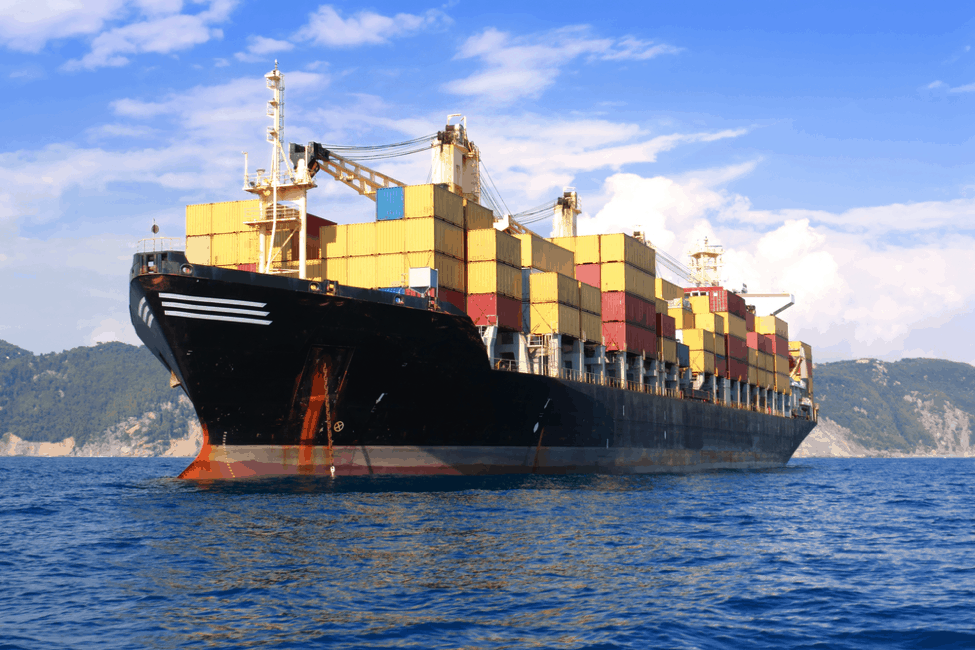As Carriers Squeeze Shippers, FMC to Hold Hearing on Red Sea-Related Surcharges
Many shippers feel like ocean freight carriers are unfairly taking advantage of recent global events for financial gain. In particular, many believe the Red Sea-related surcharges carriers are levying go way beyond the costs for carriers to divert ships. And carriers are directing higher increases toward particular shippers. Or perhaps guarding their largest customers from paying as much in freight rate hikes. Small to medium shippers, who don’t have direct contracts with carriers, appear to be suffering increased international shipping costs the most.
So are shippers right to complain? Are the surcharges carriers hitting shippers with unfair cost increases?
Tomorrow, the U.S. Federal Maritime Commission (FMC) will hold a public hearing on the issue.
FMC Hearing on Red Sea-Related Surcharges

The surcharges carriers implemented were approved by the FMC. They had to be in order to be put in place as quickly as they were. The commission will have to explain why it allowed the surcharges in the hearing tomorrow. Certainly, the issue of the fairness of the charges will be raised.
There’s no secret freight rates shot way up after Iran-backed Houthi Rebels began attacking ships in the Red Sea. In fact, Michael Angell reports in the Journal of Commerce (JOC):
Since major liner operators began rerouting container ships via southern Africa’s Cape of Good Hope in mid-December, spot container rates have, on average, doubled globally, according to Drewry. The world container index from the maritime consultancy has risen from $1,661 per FEU on Dec. 18 to $3,824 per FEU by Jan. 29.
There has been some recent relief to the hikes imposed on shippers, but freight rates remain very high compared to the period leading up to the attacks. Certainly, the attacks have added costs to carriers. Hundreds of sailings have been diverted away from the Red Sea and Suez Canal, taking many ships on the long trip around the southern tip of Africa, where the Cape of Good Hope is located.
However, many complain that the cost of those diversions is nowhere near the amount carriers are billing in surcharges. In a JOC article about the FMC hearing, Teri Errico Griffis reports:
Some shippers, such as the US-based Agriculture Transportation Coalition (AgTC) have pushed the FMC to force carriers to offer more transparency into the economics behind the recent surcharges, citing analysts’ reports that show the charges exceeding the costs of ship diversions. Peter Friedmann, AgTC’s executive director, cautioned in a Jan. 2 commentary in the Journal of Commerce that the surcharges could become a new “profit center” for ocean carriers.
Ocean Carriers Making Money Off Red Sea Crisis
Indeed, reports are coming out of improved financial outlooks for carriers in the wake of the Red Sea situation. For example, Mike Wackett reported in the Loadstar about the Japanese ocean carrier One Network Express (ONE) going from an operating of loss of $248M in the last three months of 2023 to expectations of profits for the first quarter of 2024, thanks directly to the huge rate increases because of the Red Sea crisis.
In his article, Wackett quoted another major carrier, MOL, as saying “it expected its containership business to ‘secure a certain profit level, due to the recent situation in the Middle East’.”
Special Surcharge Rules
Perhaps carriers should have the right to increase freight rates as much as market conditions allow. However, the surcharges resulting from the Red Sea crisis are special charges and come with special rules, particularly when dealing with U.S. shipping law. Griffis reports:
Under the US Shipping Act, carriers must provide 30 days’ notice to customers before implementing special charges but can petition the FMC for a waiver of that rule. The commission in recent weeks has granted waivers as carriers were forced to quickly reroute vessels around southern Africa to avoid escalating attacks on commercial shipping by Houthi militants based in Yemen.
The surcharges sought for a dry FEU range from $400 to $2,700, while refrigerated surcharges vary from $600 to $3,000 per FEU, according to FMC filings by APL, CMA CGM, Hapag-Lloyd, Maersk, Mediterranean Shipping Co., and Ocean Network Express (ONE).
Shippers Want Transparency
Especially for small to medium shippers, these kinds of charges have enormous impacts on their businesses. It’s no wonder they would want at least some semblance of transparency in how these kinds of numbers are reached by carriers. Plus, the fees are separate from the actual spot market for freight rates. Or perhaps it would be better to call them “in addition to” the spot market freight rate increases.
Griffis writes:
[FMC Chairman Daniel Maffei] said in a situation such as what’s occurring in the Red Sea, “there’s no question that there will be added costs” to keep carriers and their crew safe. But customers have an equal interest in how the surcharges are determined, how they’re implemented and what happens if the carriers’ diversions end up costing less, or more, than anticipated, he said.The surcharges are a particularly sensitive topic because they are being implemented amid fast-rising spot rates linked to the Red Sea shipping crisis. Ultimately, however, whether customers pay the surcharges is not guaranteed, as the final price paid comes down to negotiations between the carrier and the shipper or forwarder.
Hearing Shouldn’t Change Much
Shippers will be able to dispute fees but shouldn’t expect the FMC to change its position on granting the carriers permission to implement them. That’s clear from the FMC quotes Griffis shares at the end of his article:
If shippers want to dispute any surcharges, Maffei said they can go through the typical FMC channels, adding more information will be provided at the Feb. 7 hearing. But Maffei noted that the FMC granting special permission for the surcharges is not necessarily “exceptional” — the uncertain security situation in the Red Sea is.
“This is precisely the situation when these permissions come up unexpectedly. There is no way the carrier could have provided 30 days’ notice,” he said. “And if you don’t [grant the waiver] the implications could be far worse, such as a breakdown in [shipping] lanes.”
Carriers Targeting Freight Forwarders and Small to Medium Shippers?
Large shippers probably aren’t complaining as reports are showing minimal financial impact for them. Meanwhile, medium to small shippers, using freight forwarders to deal with carriers, are feeling targeted. That appears to be a rightful feeling for them and their freight forwarders, as reports are showing they are being targeted.
Angell reported in his JOC article:
Three ocean forwarders and four beneficial cargo owners (BCOs) that spoke to the Journal of Commerce about their contract of carriage terms agreed that ocean carriers have been opportunistically targeting certain customers for higher rates and surcharges.
An US agent for a Hong Kong-based ocean freight consolidator said ocean carriers were pushing FAK rates on ocean forwarders of $5,000 per FEU to the US West Coast and $7,000 per FEU to the East Coast for cargo loading in the second half of January.
However, he said major BCOs with contract commitments that move upward of 60,000 FEUs annually are still paying their contracted rates of $1,250 per FEU to the West Coast and $2,350 per FEU to the East Coast.
“Only the non-vessel-operating common carrier [NVO] is taking the big increases,” the agent said. The source said other generous contract terms for higher-volume shippers, such as 15 days of free time for containers and chassis, also remain intact, indicating an unwillingness by ocean carriers to upset larger customers.
“They don’t want to rip off the big boys for short-term gain since the market is still soft,” the agent added. “But many small importers who use NVOCCs can’t ship anymore.”
Stay Up to Date
Universal Cargo is closely monitoring the crisis in the Red Sea as it does constantly with the international shipping industry and situations that impact it. You can keep up to date with the things that affect your importing and exporting by subscribing to Universal Cargo’s blog. And, of course, we’re always here to help you with your international shipping needs.





